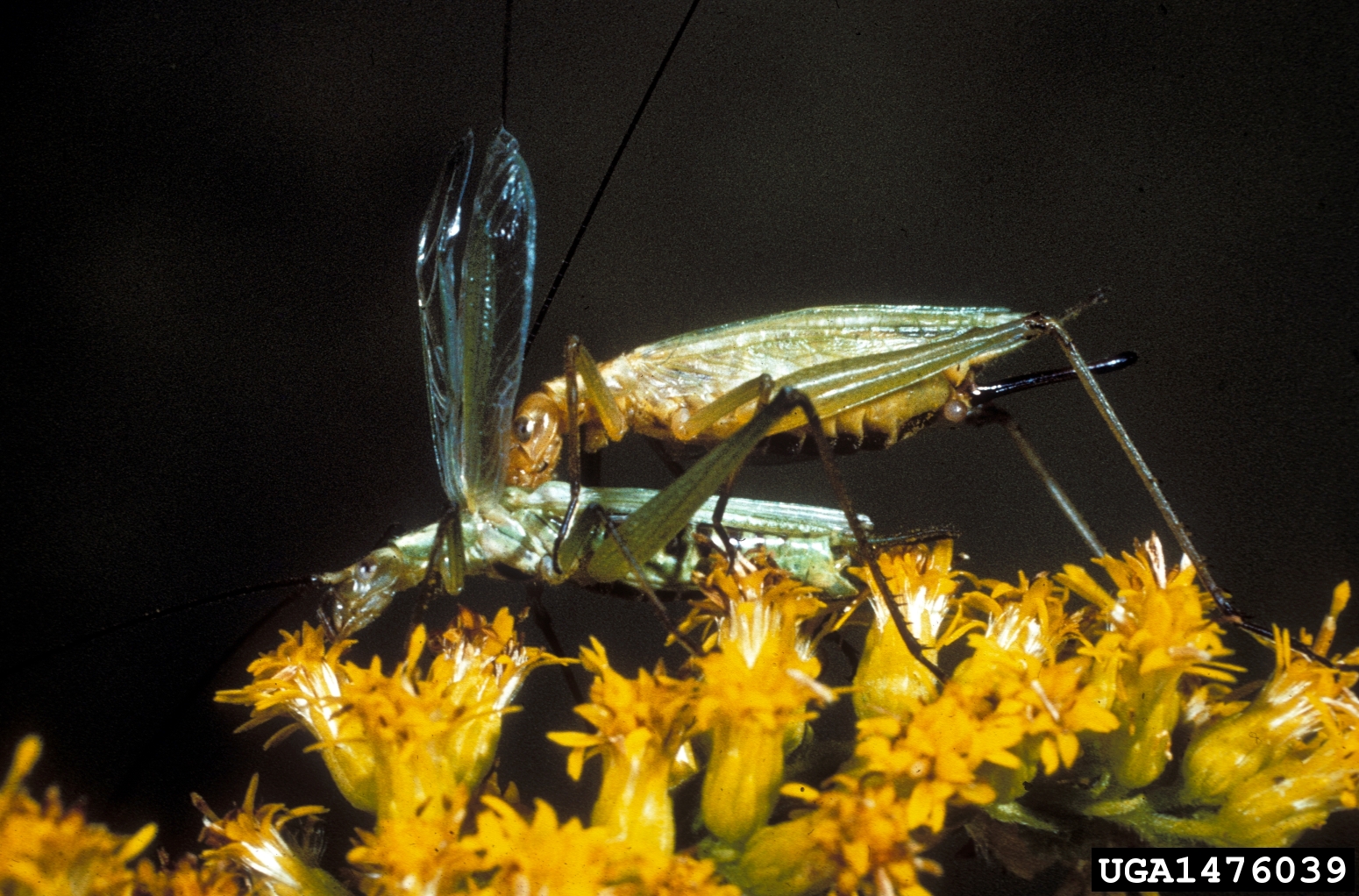Broad-Winged Tree Crickets
It’s 10:00 on a late summer evening. Dave and I are out for the final walk of the day. The soundscape is complex and varied, with individual crickets here and there and a background of buzzes and whirs of katydids. The cicadas have gone to bed, but one other sound dominates the rest. It has an almost bell-like resonance. Using the piano to match the pitch, we determine that it’s trilling in the key of F. And it seems to be coming from everywhere in the woods and fence rows. It is a tree cricket, but which one? Several species live in Iowa. Each one trills at a different frequency and with a different cadence. the snowy tree cricket, for instance, has a clear cadence of trills and pauses. When I was growing up, this snowy tree cricket defined a summer evening. Others, like the one we’re hearing, sing a continuous trill. We think it’s the right cadence and pitch for a broad-winged tree cricket.
These tree crickets have broad, clear wings with green veins. They sing by raising their wings at right angles to their bodies and scraping a rasp on one wing with a scraper on the other. Their bodies are white or cream-colored, with red spots on their heads and antennae. They hide in tangled brush such as the river grape tangles along the fence. They chew a hole in a leaf and hide under the leaf, singing through the hole. This keeps them hidden and may also add some resonance to the trill.
The male has an effective strategy for getting his mate to be still while he inseminates her. He has a specialized gland that secretes a substance she can’t resist. When his wings are up, this substance is exposed in a specialized depression, and the female climbs over his abdomen to get at it, positioning herself just right from his perspective. feeding on this delicious treat. She’ll stay for up to half an hour, apparently oblivious to everything else. While she’s feeding he has his way with her. And later, of course, there are eggs to lay in the leaf stems. The eggs will overwinter and hatch in the spring.
The hatched nymphs will eat all kinds of plant and insect food, including aphids and scales. They grow and molt five times before reaching their adult size from two-thirds to seven-eighths of an inch long. By August males are ready to sing. They’ll keep it up until a hard frost kills them all and cuts off their summer night song like a switch.
Next to the front porch are some bushes, and as Dave and I head back into the house, I think I can isolate one little fellow singing in those bushes. As soon as we get close, though, the singing stops. He’s not taking any chances of being discovered.
Photo by:
